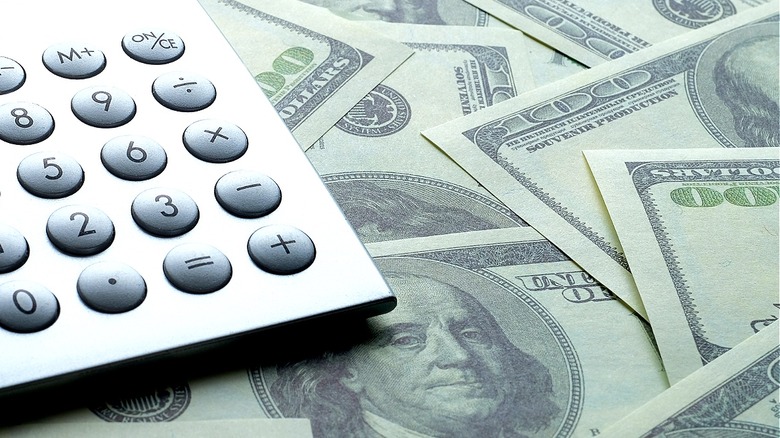Reaching This Savings Milestone Is More Significant Than You Realize
With all our advice on how to save your first $100,000, you might feel like you're falling behind if you're sitting around with $10K in a savings account somewhere. However, the most recent Survey of Consumer Finances from the Federal Reserve proves you may be being too hard on yourself. Per the Fed, the median transaction account balance for U.S. households in 2022 was $8,000, while the average was $62,410, which is quite a difference.
Something to remember when people are talking about averages is that taken at face value, that number can be quite deceptive. That's because adding up a national estimated total and dividing it up by every household doesn't take into account the vastly different net worths of each household. Nor does it consider the impacts of race and generational wealth deficits due to racial barriers, or the advantages of higher earnings and more time to save that comes with age.
According to a Forbes survey conducted in March 2024, the average American's savings is much closer to what the Federal Reserve reports for the median account balance. Forbes found that across the four generations, little over 16% have savings between $1,000 and $5,000, with roughly 28% reporting having less than $1,000 saved. So if you have $5,000 or more saved yourself, you're actually in better financial health than one in four Americans.
How to reach your first $5,000 in savings
Saving $5,000 is a laudable financial goal that you can build a budget around based on timelines and earnings. For example, the Bureau of Labor Statistics reports 36.5% of U.S. employers pay their employees on a biweekly basis, a slight edge over 32.4% of those who pay workers weekly. Since those numbers are fairly even, you might want to consider saving a manageable percentage of each check with a goal based on a year, for instance.
A budget is based on your total earnings per month after taxes, and additional household expenses, including things like rent, credit card bills, and student loans. (Here's a reminder of monthly expenses most people forget to put into their budgets.) One budgeting approach is the 50/30/20 budget, which takes what's left of your income after taxes and breaks that up into 50% for necessities, 30% to what you want, and 20% to savings or to pay down debt. Based on if you're paid weekly or biweekly, you can determine what you want to take out of your paycheck and divide your $5,000 goal by 26 or 52 weeks to determine the most realistic timeline for your savings.
Further, consider rejigging your lifestyle by taking on a side hustle or selling any unused or rarely used items (it's a frugal hack that will clear your space and make you money, too). Don't earn a lot? Here's the best way to save money if you're living paycheck to paycheck.
Where to put your $5,000 once you have it
The time to think about what you want to do with your money is before you attain that goal. Per Empower, approximately one in five Americans (21%) don't have emergency savings, which makes it difficult to be prepared for unexpected job loss, illness, or other unfun surprises in life. A savings account separate from others makes it easier to stay on track while also allowing you the option of moving the money to compound interest-generating accounts like high-yield savings accounts or certificates of deposit.
Nearly two out of five people (37%) surveyed by Empower reported being unable to cover an emergency expense over $400. With that in mind, an emergency savings account is a great place for your first $5,000. As for putting it in a CD, the primary advantage is it's a minimal-risk, high interest-generating vehicle that's locked in for a fixed amount of time and will keep your anxious paws off your money until you need it. A high-yield savings account, meanwhile, will generate more interest for you than a traditional savings account, and is also easier to access in the event of an emergency with no fees.
As for debt — specifically, credit card debt — according to Experian, credit card balances rose by 17.4% in 2023 because the number of Americans holding a balance on their credit cards rose by 4%. If this includes you, work simultaneously to pay down your debts over time, and keep those high interest rates from eating into your new savings accounts.


